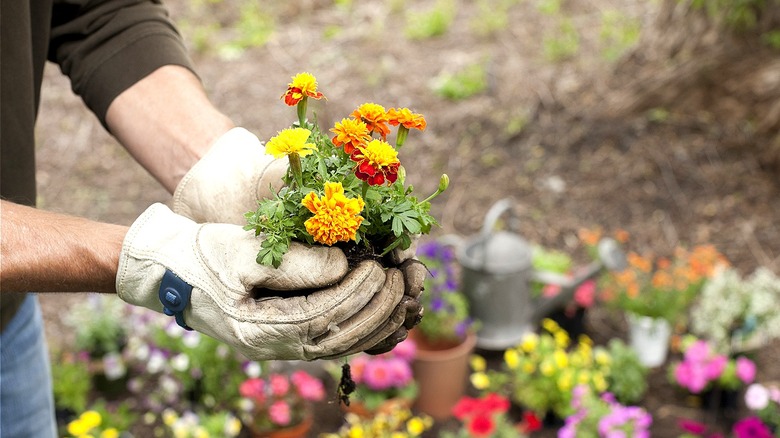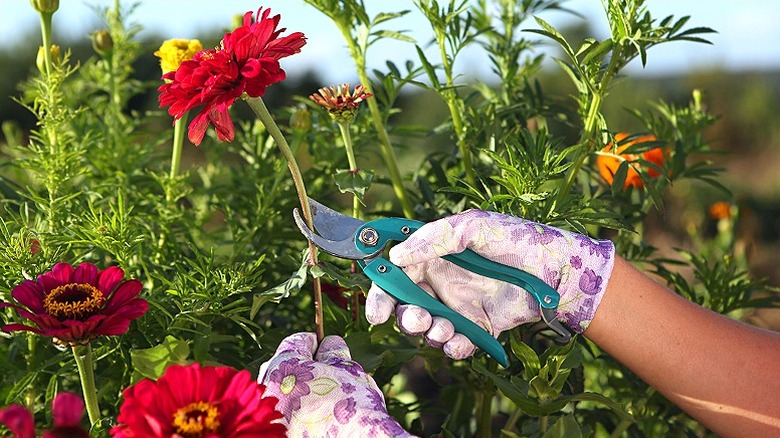Pruning annuals helps create a clean, manicured look but can also help encourage bigger, more beautiful blooms right through the end of the growing season. By learning just a few essential tips, you’ll be able to extend the color and vibrancy in your yard for a bit longer than the single season of annual favorites like petunias, zinnias, and marigolds.
Annual plants have a short period of production and grow for only one season (hence, their name) so it makes sense you’ll want to get the most out of each plant as possible. If you don’t prune back annuals, they can become leggy, spreading out as they try to find the nutrients needed to survive. They begin to look messy, too, with more branches and fewer leaves, vines, and blooms. Further, the space under the branches tends to become bare due to a lack of sunlight, creating a less-than-desirable look. However, with proper pruning, it’s possible to not only get fantastic blooms from your annuals but also to support the plant’s overall health.
You may have other questions, though, like when’s the best time to prune annuals to get the best results? Here’s what you need to know when it comes to caring for annuals and when to trim them for continued growth.
When to prune your annuals

Given that annuals only grow for a season, you may wonder what’s the point in pruning them. But doing so is essential if you want to get the most out of your plants, and it begins at the start of the season. When the season begins, pinch back the first flowers (yes, that will help with continued growth throughout the year). This stimulates the plant to produce more leaves and flowers, not just at the top of the stem but all along the stem, encouraging more overall growth and development as it goes. Do this within the first few weeks of the season.
Then, throughout the season, deadhead spent flowers. If you don’t remove these spent, drooping flowers, the plant will continue to push energy into them, and eventually, they will ripen and seed. However, if you get rid of that seed, the plant is then encouraged to produce more blooms that can help it to seed. Do this throughout the growing season for your annuals, whenever you see flowers starting to wilt or dry out. If you want to save some seeds for next year, you can do that, but wait until the end of the growing season.
The key to understanding the science behind these later blooms is very simple. The goal of the annual is to reproduce through the production of seed. When you stop that process after the blooms fade, it creates more blooms to try again. This triggering of new blooms is exactly what you want to ensure you’re getting exceptional color into the year.
How do you cut back annuals

Another essential tip when it comes to getting the most out of annuals is to shape and trim the actual vines and stems toward the end of the growing season. This creates a more beautiful look and supports better color into the later portion of the year. As annuals grow and their stems extend, you can cut them back rather vigorously. Look at each of the stems to find any two leaves that are facing upward, as those are working to capture sunlight. You can then snip the stem right above this. Work around each of your annuals with precision and shape the plant the best you can to allow for more controlled growth. Focus on all stems that are exceptionally long.
Once you trim off the portion above any two leaves, that’s going to encourage those leaves to become their own branches, creating new blooms as they do. Keep in mind you’ll always want to prune annuals based on the type since some need more pruning and trimming back than others. Avoiding common pruning mistakes with your plants can help minimize stress on the annual. As always, continue to feed your annuals into the later portion of the year as well. Giving them a moist soil that’s nutrient-rich will help encourage long-term growth and blooming.



